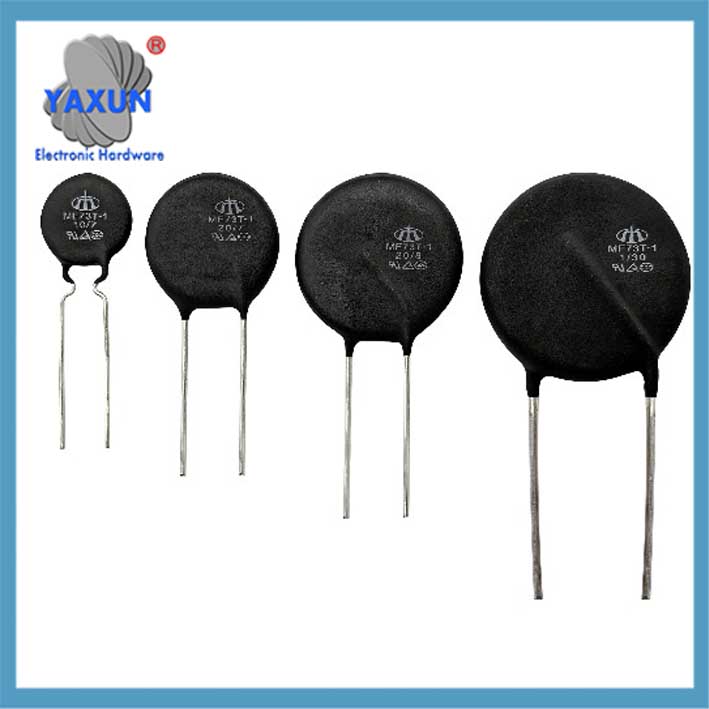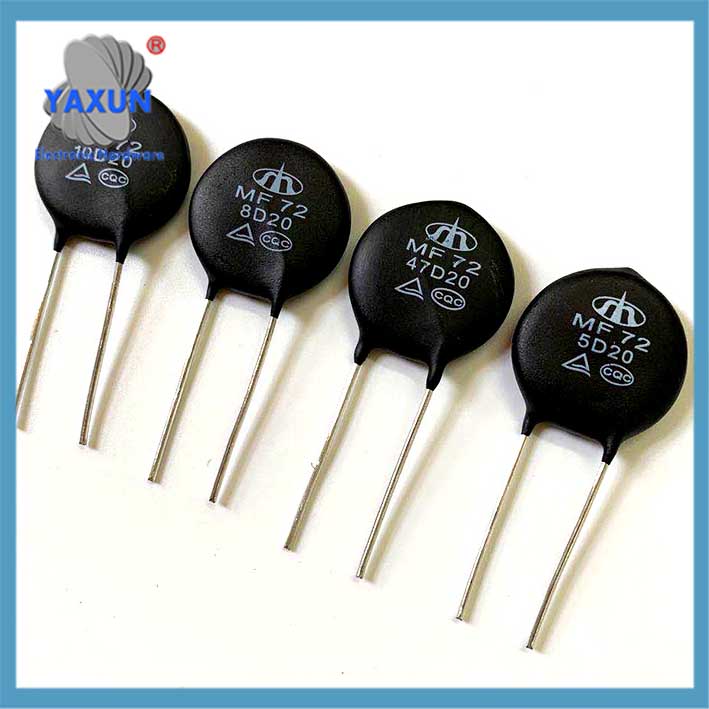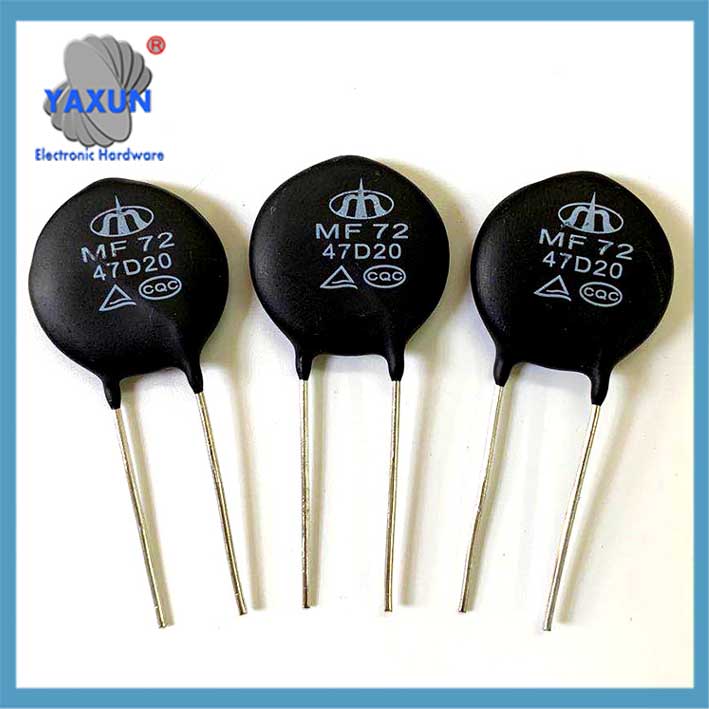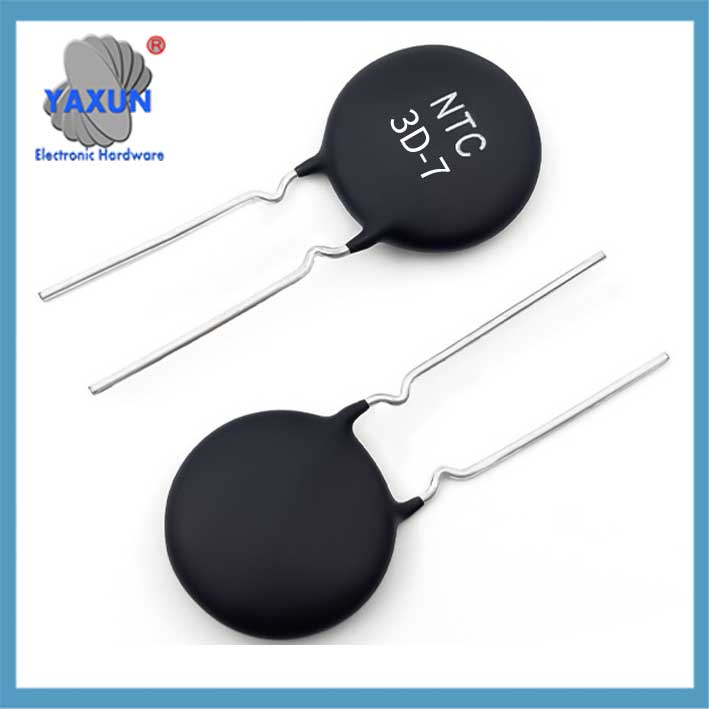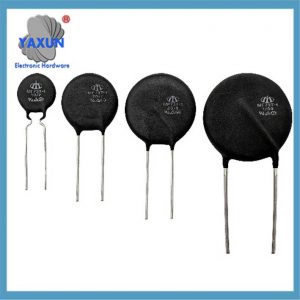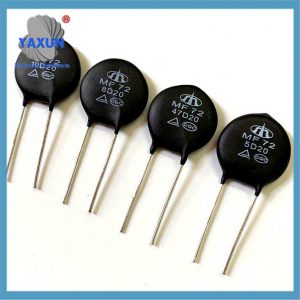produktkategori
- Termisk säkring 32
- ytmonterade säkringar 12
- termistor 36
- PCB-monterad säkringshållare 27
- Ledningsnät 6
- Bladsäkringshållare 17
- termostat 50
- Elektrisk säkring 24
- Biltemperatursensor 7
- Termisk effektbrytare 22
- Säkringsboxhållare 36
- Temperatursensor 75
- Termobrytare 68
- Bilsäkring 20
- Skruva fast säkringar 8
Produkttaggar
Tillämpning och val av krafttermistorer
Vad är en krafttermistor? En krafttermistor, Även känd som en Power NTC eller inrush -strömbegränsare, är en komponent som är utformad för att undertrycka Inrush -strömmar i elektriska kretsar. Den använder det självvärmande kännetecknet för en negativ temperaturkoefficient (NTC) termistor för att begränsa de höga strömmarna som kan växa när en krets är påslagen.
Strömtermistor (huvudsakligen negativ temperaturkoefficient typ NTC) är en nyckelkomponent för att undertrycka överspänningsström i elektroniska kretsar. Dess huvudparametrar, urvalspunkter och tillämpningsscenarier är som följer:
jag. Kärnfunktioner och principer
Undertryckning av överspänningsström
I ögonblicket för strömstart, NTC-resistansvärdet anslutet i serie i ingångskretsen är högt, vilket kan begränsa toppströmmen; efter att strömmen slås på, motståndet sjunker snabbt på grund av värme (strömförbrukning kan ignoreras), säkerställa stabil drift av efterföljande kretsar.
Negativa temperaturegenskaper
Resistansvärdet minskar exponentiellt med stigande temperatur: R(T)=R0⋅eB⋅(1T−1T0)R(T)=R0⋅eB⋅(T1−T01) (R0R0 är motståndsvärdet vid 25℃, BB är materialkonstanten).
Hur det fungerar:
Högt initialt motstånd:
När strömmen först sätts på, en effekttermistor har hög resistans, vilket begränsar den initiala startströmmen.
Självuppvärmning:
När strömmen flyter genom termistorn, det genererar värme, vilket gör att dess motstånd minskar.
Motståndet minskar:
Reduktionen i resistans gör att kretsen kan dra den nödvändiga driftsströmmen utan den initiala överspänningen.
Fördelar:
Skyddar utrustning:
Genom att begränsa startströmmen, effekttermostater förhindrar skador på känsliga komponenter och utrustning.
Minskar strömförlust:
Resistansminskningen genom självuppvärmning minskar effektförlusten jämfört med att använda ett fast motstånd.
Energibesparingar:
Minskad strömförlust kan leda till energibesparingar i applikationer som att byta strömförsörjning och andra elektriska enheter.
Ii. Nyckelparametrar och urvalspunkter
| Parametrar | Definition och urvalsbetydelse | Typiskt värde/intervall |
| Noll effektmotstånd (R25) | Det nominella motståndet vid 5°C bestämmer den initiala överspänningsdämpningen. Beräkningsformel: R25≈U2⋅IsurgeR25≈2⋅IsurgeU (UU är ingångsspänningen, IsurgeIsurge är överspänningsströmmen) | Vanligt använda 2,5Ω, 5Åh, 10Ω±(15-30)% |
| Maximal stationär ström | Strömmen som kan hållas under lång tid vid 25℃, måste vara större än kretsens arbetsström | Beroende på modell 0,5A~ tiotals ampere |
| Kvarvarande motstånd | Minsta resistansvärde vid hög temperatur (som 100℃), påverkar kretsens normala strömförbrukning | Cirka 1/10~1/20 av R25 |
| B -värde | Material konstant (uppmätt vid 25℃~50℃), bestämmer lutningen på resistans-temperaturkurvan; högt B-värde svarar snabbt men har höga kostnader | 2000K~6000K |
| Termisk tidskonstant | Svarshastighetsindex, lapptyp (som SMD) kan nå sekunder | Glastätning/emaljerad tråd typ ca 10~60 sekunder |
Notera: Exempel på modellidentifiering MF72-10D-9:
10: R25=10Ω.
D: Skivpaket
9: 9mm diameter;
III. Typiska tillämpningsscenarier
Strömförsörjningsutrustning: Ingångsöverspänningsdämpning av switchande strömförsörjning, UPS, adapter;
Belysningssystem: Anti-chock skydd av LED-drivrutin, ballast, belysningsfördelningslåda;
Industriutrustning: Motorstart, industriell strömförsörjning, medicinskt instrument;
Household apparater: Luftkonditionering, startskydd för kylkompressor;
Iv. Urvals- och undvikandeguide
"Aktuell matchning".
Den maximala stationära strömmen måste vara större än 1.5 gånger den faktiska arbetsströmmen för att undvika kontinuerlig uppvärmning och fel.
Värmeavledningsdesign
I scenarier med hög effekt, tillräckligt med avstånd eller extra värmeavledning krävs för att förhindra att överdriven temperaturhöjning orsakar otillräckligt kvarvarande motstånd.
Extrem temperatur
Drifttemperaturområdet är i allmänhet -55 ℃ ~ + 125 ℃. Glasförseglade modeller (tål 150 ℃) föredras i högtemperaturmiljöer.
V. Jämförelse av paket och prestanda
| Pakettyp |
Fördelar | Tillämpliga scenarier |
| Epoxiharts | Låg kostnad, bra vattentäthet | Hushållsapparater, vanliga nätaggregat |
| Glaspaket | Hög temperaturmotstånd (>150℃), snabb respons | Industriell utrustning, fordonselektronik |
| Typ av ytmontering (SMD) | Liten storlek, lämplig för PCB med hög densitet | Kompakt kraftmodul |
Dricks: Var försiktig vid frekventa bytescenarier – NTC kan förlora överspänningsdämpningsförmågan när otillräcklig kylning är otillräcklig. Just nu, ett parallellreläbypass kan anslutas.
Kontakta oss
Väntar på ditt mejl, vi kommer att svara dig inom 12 timmar med värdefull information du behövde.
 English
English Afrikaans
Afrikaans العربية
العربية বাংলা
বাংলা bosanski jezik
bosanski jezik Български
Български Català
Català 粤语
粤语 中文(简体)
中文(简体) 中文(漢字)
中文(漢字) Hrvatski
Hrvatski Čeština
Čeština Nederlands
Nederlands Eesti keel
Eesti keel Suomi
Suomi Français
Français Deutsch
Deutsch Ελληνικά
Ελληνικά हिन्दी; हिंदी
हिन्दी; हिंदी Magyar
Magyar Bahasa Indonesia
Bahasa Indonesia Italiano
Italiano 日本語
日本語 한국어
한국어 Latviešu valoda
Latviešu valoda Lietuvių kalba
Lietuvių kalba македонски јазик
македонски јазик Bahasa Melayu
Bahasa Melayu Norsk
Norsk پارسی
پارسی Polski
Polski Português
Português Română
Română Русский
Русский Cрпски језик
Cрпски језик Slovenčina
Slovenčina Slovenščina
Slovenščina Español
Español Svenska
Svenska ภาษาไทย
ภาษาไทย Türkçe
Türkçe Українська
Українська اردو
اردو Tiếng Việt
Tiếng Việt
